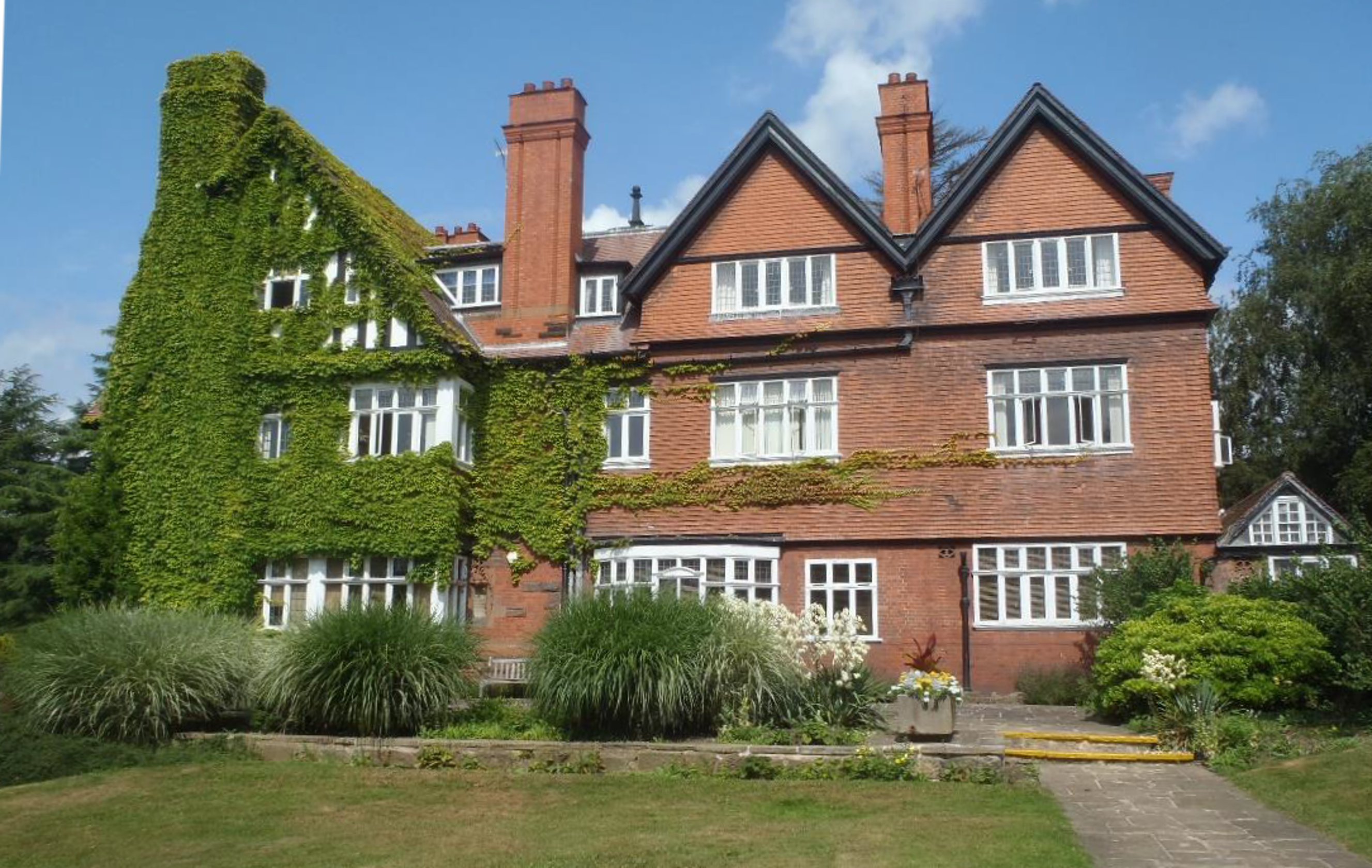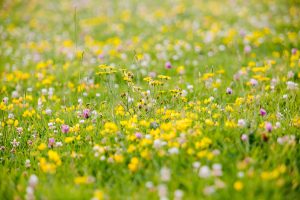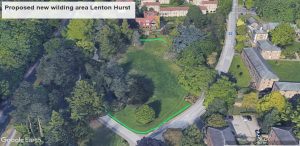
May 23, 2022, by sustainablenottingham
Growing a wildflower meadow at Lenton Hurst
Lenton Hurst is a historic house on University Park. It has a large lawn that is mown every 10 days during the growing season.
The grounds team are turning this lawn into a wild area, planted with wildflower seeds and plants with the end goal of it becoming a permanent, stunning wildflower meadow.
The new space will have two pathways for people to walk through and immerse themselves in nature.
Benefits of growing wildflower meadows
Over the past century, the number of wildflowers in the UK has drastically declined. Since the 1930s, Nottinghamshire has lost 97% of its flower-rich meadows and pastures. This has a cascade effect on our wildlife, with fewer pollinators and fewer insect-eating birds. Close to 35% of invertebrate pollinators, particularly bees and butterflies, and about 17% of vertebrate pollinators, such as bats, face extinction globally.

On a single day in summer, one acre of wildflower meadow can contain 3 million flowers and produce 1 kg of nectar sugar.
The wildflower area by Lenton Hurst will be a habitat for many of the species we have on campus and provide more nectar to our pollinators. The house itself has already been a habitat for our wildlife. Last year, a breeding colony of brown long-eared bats moved into the basement!
As well as benefitting the campus’ biodiversity, the reduction in mowing will save 96 litres a year in fuel and 225kg CO2!
On top of the environmental benefits, it will be a great place to relax and spend time surrounded by nature, helping to support the mental health of our staff and students.
Why Lenton Hurst?
Lenton Hurst’s large lawn is suitable to become a wildflower meadow because its existing grass species are good ‘companion grasses’ alongside perennial wildflower species (wildflowers that live longer than 2 years). This means that no major intervention or change in grass species is required. Instead, wildflowers will be planted and the existing grassland will be managed appropriately for cultivating the meadow.

Proposed new wilding area at Lenton Hurst
The plan
The change in grass management will provide the correct habitat for a range of wildflowers to naturally start to colonise and thrive. There will be a large seed bank of flower species present in the soil which will have the conditions to germinate and grow as the grassland management will reduce competition from the grasses.
At the end of the summer and into the autumn, grass growth will decrease, which will also help establish some flower seedlings. An overseeding programme of perennial wildflowers will be done in the autumn when soils are warm and moist.
Long term, the area will be cut just once or twice a year. This will reduce CO2 emissions from mowing, save time and money, as well as give the best possible environment for the wildflower meadow to establish and thrive.
There is potential for this method to be used elsewhere on campus to create wildflower meadows where lawns are currently frequently mown.
Keep an eye on the Lenton Hurst lawn over the next year to watch the meadow develop!
Let us know what you think about campus growing wild in the comments below.

This is a brilliant example of how we can create greater biodiversity across our campuses – well done to the team responsible. Let’s have more of these!
The item about Nature Metrics https://www.naturemetrics.co.uk/insights/?utm_source=google&utm_medium=cpc&utm_campaign=NatureInsights&gclid=CjwKCAiAqt-dBhBcEiwATw-ggKhya-mhHernw9QAfclVrPL07eKJSEIwZVhMDj0R-M2cFm6HmdxN2hoChjQQAvD_BwE
on BBC inside science https://www.bbc.co.uk/programmes/m001gl6z
was interesting and relevant to our university.